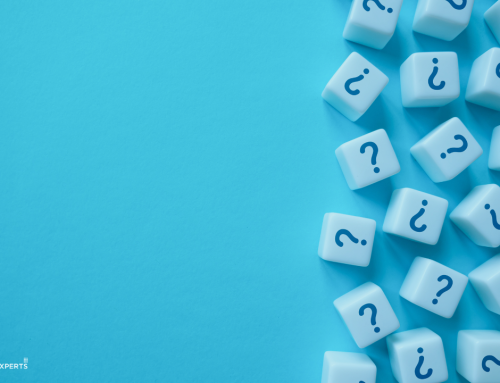Every company sells something, and every company must serve its customers to sell their products and services. But, how can you do that if you don’t know who your customers are and how they want to buy from you?
A buyers journey is the path that a buyer follows while researching, comparing and finalizing your product.
We’ll define the buyers Journey, explain the Three Steps Every buyers Journey Must Have, and show you how to create and use a buyers flow chart.
In addition, we’ll discuss Why You Must Understand Your buyers Journey and how to use one to your advantage. You can also check our blog post for tips and tricks to improve your buyers flow chart!
What Is a Buyers Journey?
You can break down the buyers journey into four stages.
The first stage is awareness. This is the point where the buyer defines a problem, considers potential solutions or service provider.
The second stage is consideration. Also considered evaluation, where a customer evaluates your product or service against others. They can also take their time and make comparisons between different brands before deciding on a decision point.
Then, the decision stage. The decision stage is where a customer has decided to purchase a product and is looking for the best deal possible. Salespeople need to be able to identify customer needs, suggest products, and help customers make the final buying decision.
The final stage is loyalty. Congratulations! You’ve helped a customer go through all the steps to purchase, and now you should focus on maximizing the positive experience that leads to a repeat purchase.
Every buyers journey is different. While some buyer journeys last for years, others end before they’ve even begun. However, most businesses think of sales from a business perspective, not a customer perspective.
By understanding the buyers journey, you can better understand their needs and tailor your process to them.
A buyers journey map describes the customer’s steps to make a purchase. The buyers journey map provides a helpful visual for everyone on your team to follow. In addition to visualizing the journey, buyers journey examples help all of your team members understand how to support your process.
Three Steps Every Buyers Journey Map Must Have
The first step in the buyers journey is research and understanding your customer service stats. Define the problem your customer is experiencing that is going to bring them to you. Once buyers know the problem, they will consider the available options and determine which provider can provide the best solution.
The buyers journey begins with preliminary research, such as reading articles or searching Google to learn more about a problem. The buyer has already identified a problem and is exploring options to solve it. They are aware of your solution, as well as the solutions of your competitors. Once they’ve found your solution, they’re ready to make a purchase. First, they’ll need to decide whether you’re the best solution to their problem.
The second step in the buyers journey map is to clearly document the process. Don’t just talk about it, bring pen to paper or use new tools to help you make your buyers journey. Make sure to answer key questions with your maps:
- When do you want to contact your buyers?
- What do you want to say to them?
- How do you want to say it?
- What channels are you using to engage with your customers?
- Where do you want to build trust?
- Where do you want indifference?
The buyers journey helps you understand your customers’ needs and build customer personas. Customer personas are fictional characters that help you understand the mindsets of your target customers and determine how best to approach them. It also enables you to scale your plan across an entire organization.
The buyers journey is an aggregation of all of your research, strategy, and goal to make informed decisions. The main focus is to create a process that will help you gather the right information at the right time to take action.
The last step is to take inventory of your resources and start using your buyers journey to make decisions and inform your team. With the help of these tools, the buyer can make the final decision without any complications.
Why Must You Understand Your Buyers Journey?
Understanding the buyers journey can give your business a competitive advantage. By understanding a customer’s trip, you’ll better understand their needs and goals and can tailor your products and services to them.
Be clear about what you offer to the buyer. Sometimes they misidentify a pain point and start the entire process over. Ensure you understand your buyers journey well before offering them your solution. You’ll make their journey a more enjoyable one for both of you.
Remember that buyers do not always proceed through the buying journey in a linear fashion. They will jump from one stage to the next and may even go backward. Knowing each stage can help you deepen the relationship with your customers, manage issues, and nurture them toward activation.
Identifying the objections and behaviors of your buyer is essential for successful sales.
Understanding your buyers journey will help you respond to their objections and make their purchasing process less painful. It will also give you a solid foundation on which to base your unique selling proposition.
You should develop a unique selling proposition to set your company apart from your competitors. Creating a buyer journey map will help you identify these objections and win more business.
Scaling Your Buyers Journey Throughout Your Organization
In the journey process, one of the most valuable tools is the buyer persona.
Creating buyer personas allows you to optimize your marketing plan, content strategy, sales process, and loyalty system. Whenever you have a question you can just ask yourself, would my buyer persona be interested or buy?
If you are unsure about making a buyer persona scalable, here are a few ideas to get you started.
Once you have your buyer personas defined, document their questions and objections. These questions and complaints will help you improve your team’s ability to deal with those objections and convert leads into sales.
A buyers journey map can help you visualize what your customers go through as they move through your business’s sales funnel. You can also use buyer personas to identify what makes your customers unhappy and how you can resolve their problems.
Once you have the buyer personas, you can start designing content that addresses their concerns. When buyers have identified a problem or challenge, they will begin looking for a solution.
Overall, the buyer persona and the map itself will help you make decisions and put a face to your customer. Next time you are asking yourself, should we offer this service or make this post refer to your buyers journey and does it fit.
Final Thoughts on Your Buyers Journey
If you’ve never thought about the buyers journey before, it could be because your product is so obvious that the buyers journey isn’t even an issue.
A buyers journey is the path that a buyer follows while researching, comparing and finalizing your product. It can be a long and winding road: it might start with a search for a company’s website, then an exploration of its features or benefits, followed by an evaluation of its price, and only finally does the prospect convert into a customer.
This kind of path doesn’t only apply to buyers shopping for consumer goods, but also those seeking more complex products and service offerings. But if you’re trying to sell something non-obvious, or something that a buyer may have to consider over time, then you may find a buyers journey to be of interest.
The main thing to remember is that nothing is set in stone: you can’t control a customer’s journey from start to finish.
All you can do is make sure you’re present at each step of the buyers journey by interacting with them and reacting naturally based on their actions and preferences.







